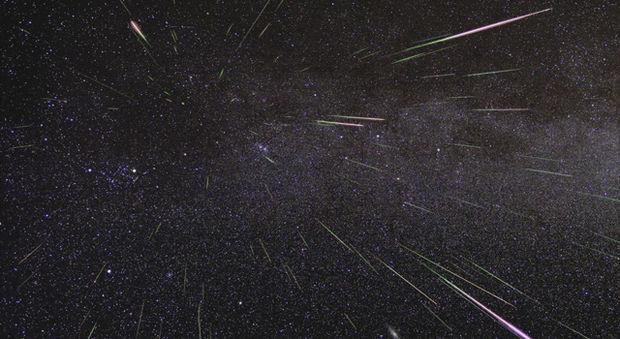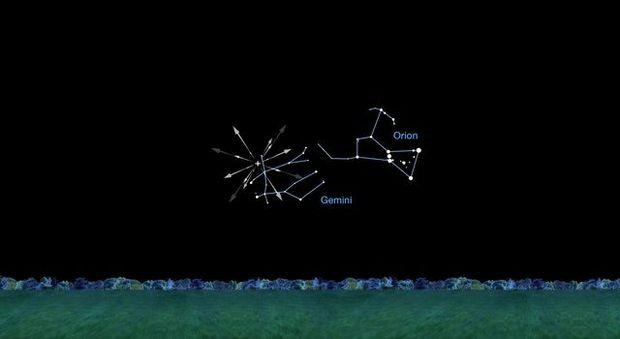National Geographic reports that there will be "near perfect" conditions for this year's Geminid meteor shower, set to peak on the night of Wednesday, December 13, into the early morning of December 14. Last year the Geminids peaked during a supermoon, making it much more difficult for sky watchers to glimpse the meteors. But this year the waning crescent moon won't rise until 4:30 a.m. on December 14, making for a dark and almost moonless sky.

How to watch
The Geminids are said to travel at slower speeds than many other meteor showers, making for "beautiful long arcs that are visible for at least a second or two." In the northern hemisphere, star gazers away from city lights could expect to see up to 120 meteors per hour, while observers stuck in areas with light pollution can expect to 20-60 meteors per hour.
The peak of the shower is expected around 2 a.m., but you might be able to start seeing meteors as early as 9 or 10 p.m.

Luckily, you don't need binoculars or even a telescope to catch this show. Simply find a spot away from city lights, lie on the ground (making sure to adequately bundle up), and give your eyes about 20-30 minutes to adjust to the dark. The Geminids will appear to radiate from the Gemini constellation, which will rise above the eastern horizon after 9 p.m. local time. To spot Gemini, look for Orion (three stars in the Hunter's Belt), then look just up and to the left, high in the Southwestern sky.
Origin of the Geminids
According to the website Space, the Geminids come from the near-Earth object 3200 Phaethon, "an asteroid that may have undergone a collision with another object in the distant past to produce the stream of particles that Earth runs into," which creates the meteor shower. The majority of meteors are the size of a grain of sand, and the streaks of light we see are those meteors burning up in the Earth's upper atmosphere.

 Luckily, you don't need binoculars or even a telescope to catch this show. Simply find a spot away from city lights, lie on the ground (making sure to adequately bundle up), and give your eyes about 20-30 minutes to adjust to the dark. The Geminids will appear to radiate from the Gemini constellation, which will rise above the eastern horizon after 9 p.m. local time. To spot Gemini, look for Orion (three stars in the Hunter's Belt), then look just up and to the left, high in the Southwestern sky.
Luckily, you don't need binoculars or even a telescope to catch this show. Simply find a spot away from city lights, lie on the ground (making sure to adequately bundle up), and give your eyes about 20-30 minutes to adjust to the dark. The Geminids will appear to radiate from the Gemini constellation, which will rise above the eastern horizon after 9 p.m. local time. To spot Gemini, look for Orion (three stars in the Hunter's Belt), then look just up and to the left, high in the Southwestern sky.